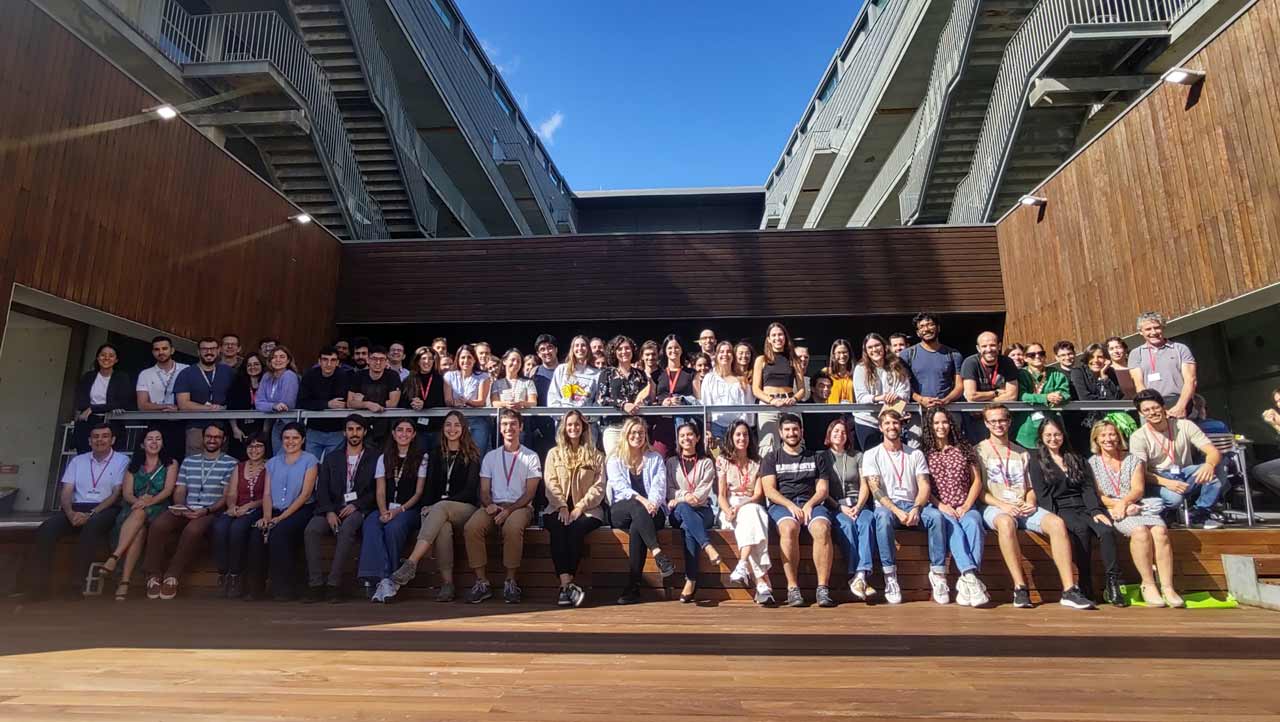Comunitat
2. Community
Diversity, uniqueness and excellence: a quarter of a century researching and teaching medicine and life sciences
Twenty-five years ago, UPF embarked on a new venture: inaugurating the Faculty of Health and Life Sciences and offering its first degree in science, specifically, in Human Biology. The task entailed creating a unique new heterogeneous department, staffed with inquisitive and committed researchers, who have helped the institution grow and become a benchmark in Spain.
‘It all began with the desire to teach medicine at Pompeu Fabra University’, explained Jordi Camí, professor of pharmacology and the first head of the former Department of Experimental and Health Sciences (DCEXS), today the UPF Department of Medicine and Life Sciences (MELIS), at the very start of the interview. As he recalls, this was in late 1995.
Although the initial idea was soon shelved due to institutional disagreements, the desire to create a degree in health sciences at UPF bore fruit. ‘When I was studying medicine, in the 1980s, the Autonomous University of Barcelona (UAB) offered a programme in basic medical sciences. This made me think that general biology could be taught differently, emphasizing the biomedical biology pathway, which is closer to medicine’, Camí said.
Hence, the advent of the undergraduate degree in Human Biology, the first such studies offered by the UPF Faculty of Health and Life Sciences, launched in the 1998-1999 academic year. The Faculty was already located in what today is known as the teaching building, even though, at the time, only two-thirds of the current building was occupied by research and teaching facilities. The rest was occupied by the Hospital del Mar Medical Research Institute (IMIM), today the Hospital del Mar Research Institute.
This story would not be the same without the students, who have made the department grow, both by challenging it and as drivers of its development. Accordingly, in this tour through the history of the MELIS, we will also hear from alumni
Starting from scratch, aiming high
In keeping with the university’s tradition, the Faculty of Health and Life Sciences had – and still has – a single heterogeneous department, encompassing many of the biomedical disciplines. Internally, the department was organized based on the science being done by the staff, albeit without ever losing sight of teaching, an aspect taken into account from the moment teaching staff were recruited.
‘We wanted to recruit reputable people who would allow us to ensure outstanding, modern research but, at the same time, had an inclination for teaching. That was something neither obvious nor trivial, but we managed to pull it off largely thanks to the help of the external advisory committee’, Camí explained.
To attract international talent, teaching positions were advertised in the print media. ‘We were pioneers in this regard’, the professor recalled, ‘and we were heavily criticized for daring to run pre-selection adverts in La Vanguardia and El País. We also advertised the first teaching positions, which would end up being civil servant positions, in Nature and Science’, he added, an unprecedented move for a Spanish university.
This initial hiring process resulted in the recruitment of researchers such as Jaume Bertranpetit, Ricard Solé, Miguel Ángel Valverde, Francesc Posas, Juana Díez and Elena Hidalgo, all of whom are still part of the MELIS staff today.
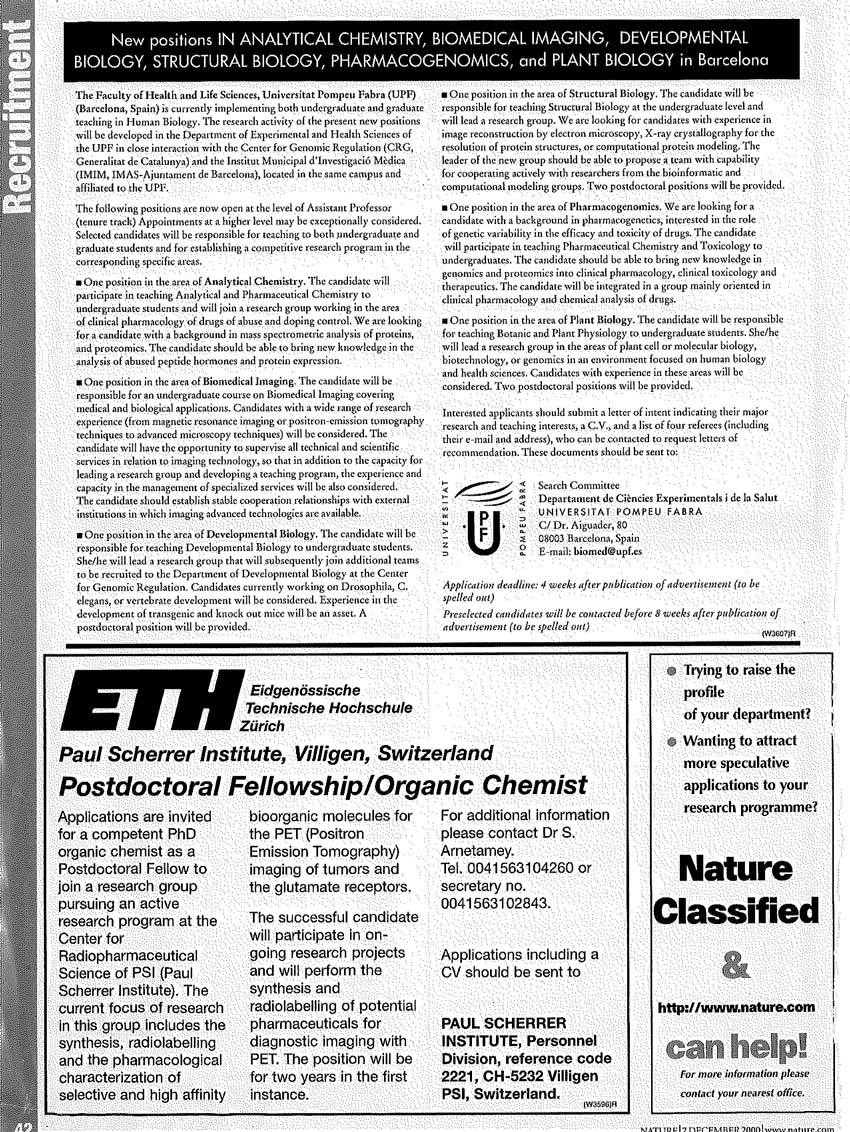
‘The arrival of a new group on the Mar campus meant we had to adapt the spaces. I remember touring spaces with researchers and architects to determine whether they met their needs or had to be adapted. This all had to be done despite our financial constraints and the fact that we had a very small team for the job. But the teaching and research staff and the management staff consistently worked together efficiently, whether out of conviction or because there was no other choice!’, recalled Fina Lorente, who has been director of the Mar campus since 1999 and who, along with then Dean Jaume Bertranpetit, was in charge of the facilities’ adaptation.
A biomedical hub in southern Europe
The history of the MELIS was also deeply impacted by the 1992 Barcelona Olympic Games. ‘When the city’s special urban development plan was being reviewed in 1991, we managed to get the site of the old Barceloneta football pitch classified as facilities and a biomedical park’, said Camí. In his view, that was the key to what would come next: the creation of the Barcelona Biomedical Research Park (PRBB), an endeavour that would prompt him to step down from his position as head of the department.
The baton was passed to Miguel López Botet, a professor of immunology and the first elected head, who would lead the department for nearly two years. ‘The department had a very pleasant atmosphere. Everyone was very excited to start. Setting up the laboratories with the great diversity of equipment we needed was a real challenge, but we received a lot of support from the administrative staff assigned by the university.’
Those years saw the fitting out of the research laboratories, intended for the newly recruited researchers, as well as three practical laboratories, where the teaching would be done.
‘The research needs were unlike anything UPF had done up to that point’, Lorente explained. ‘So, the people in administration had to adapt to all the new developments, which is a constant on the Mar campus. We knew how to manage finances and teaching; now we also had to learn how to set up and manage specialized facilities, such as a cell culture room or an animal behaviour facility!’
López-Botet also recalled how, thanks to a grant from the Ministry, they were able to purchase basic equipment to launch the first scientific and technical services. In 2000, the Genomics Service opened its doors. This was followed, in 2001, by the launch of the embryo of what today is the Flow Cytometry Unit, with Òscar Fornas at the helm. This period also saw the first plans and discussions of what would eventually become the PRBB.
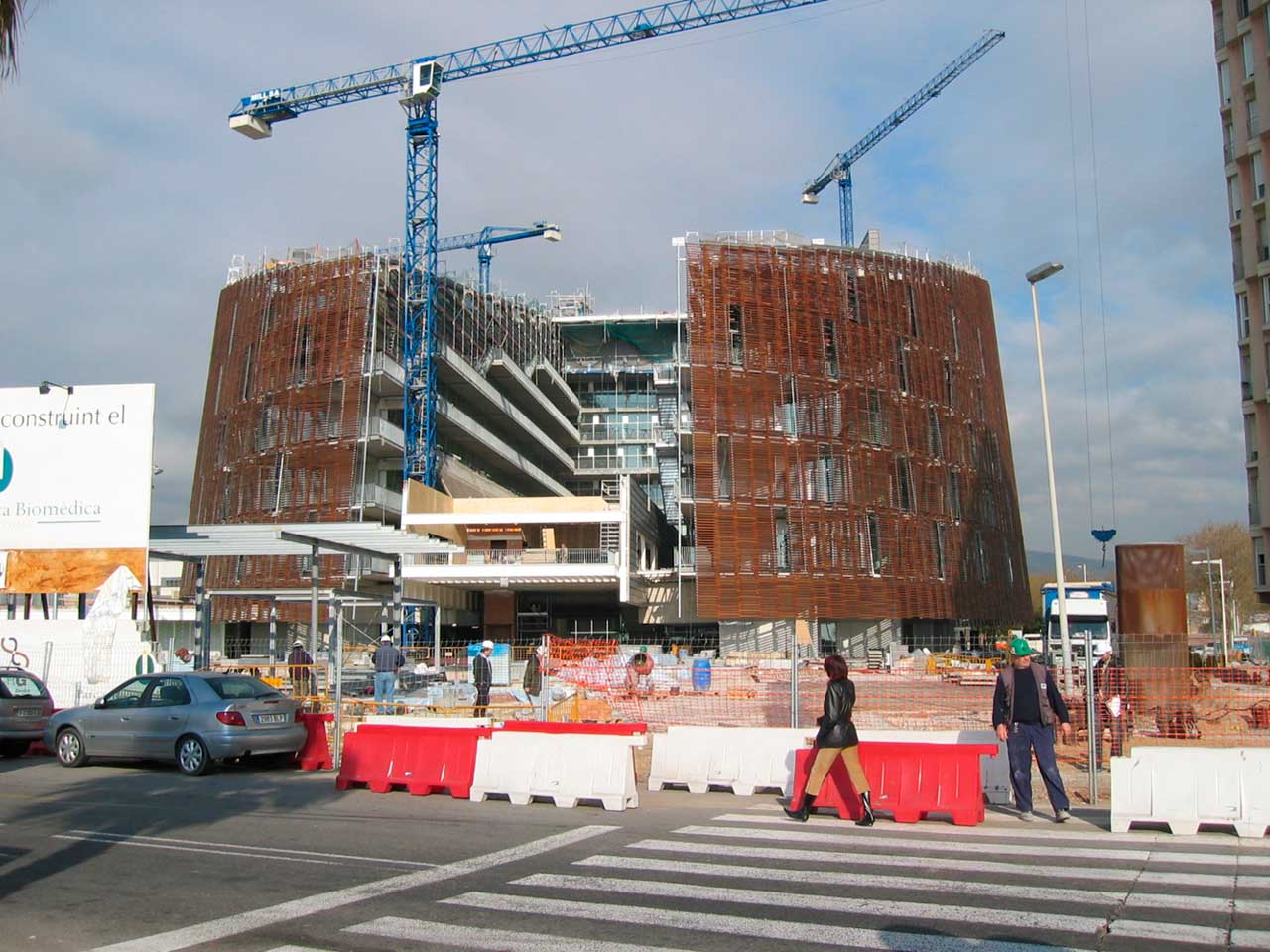
‘When I arrived in Barcelona, in 2000, my colleagues told me, “You see this football pitch? We’re going to build a research centre here.” I thought that was an act of faith!’, admitted López-Botet. Six years later, under the leadership of Fernando Giráldez, the department moved to the new Barcelona Biomedical Research Park, along with the Centre for Genomic Regulation (CRG), the IMIM (today, the Hospital del Mar Research Institute), and the Centre for Research in Environmental Epidemiology (today, the Institute for Global Health), creating one of the most important biomedical hubs in southern Europe.
A talent incubator
‘For the department, the PRBB is a continuous challenge, an ever-present benchmark’, said Arcadi Navarro, who headed the department from 2013 to 2016. ‘As academics, we can be perfectly happy working in isolation in a thematically uniform environment or without a genomic regulation centre or European molecular biology laboratory, but having those neighbours, who are constantly innovating, helps us grow.’
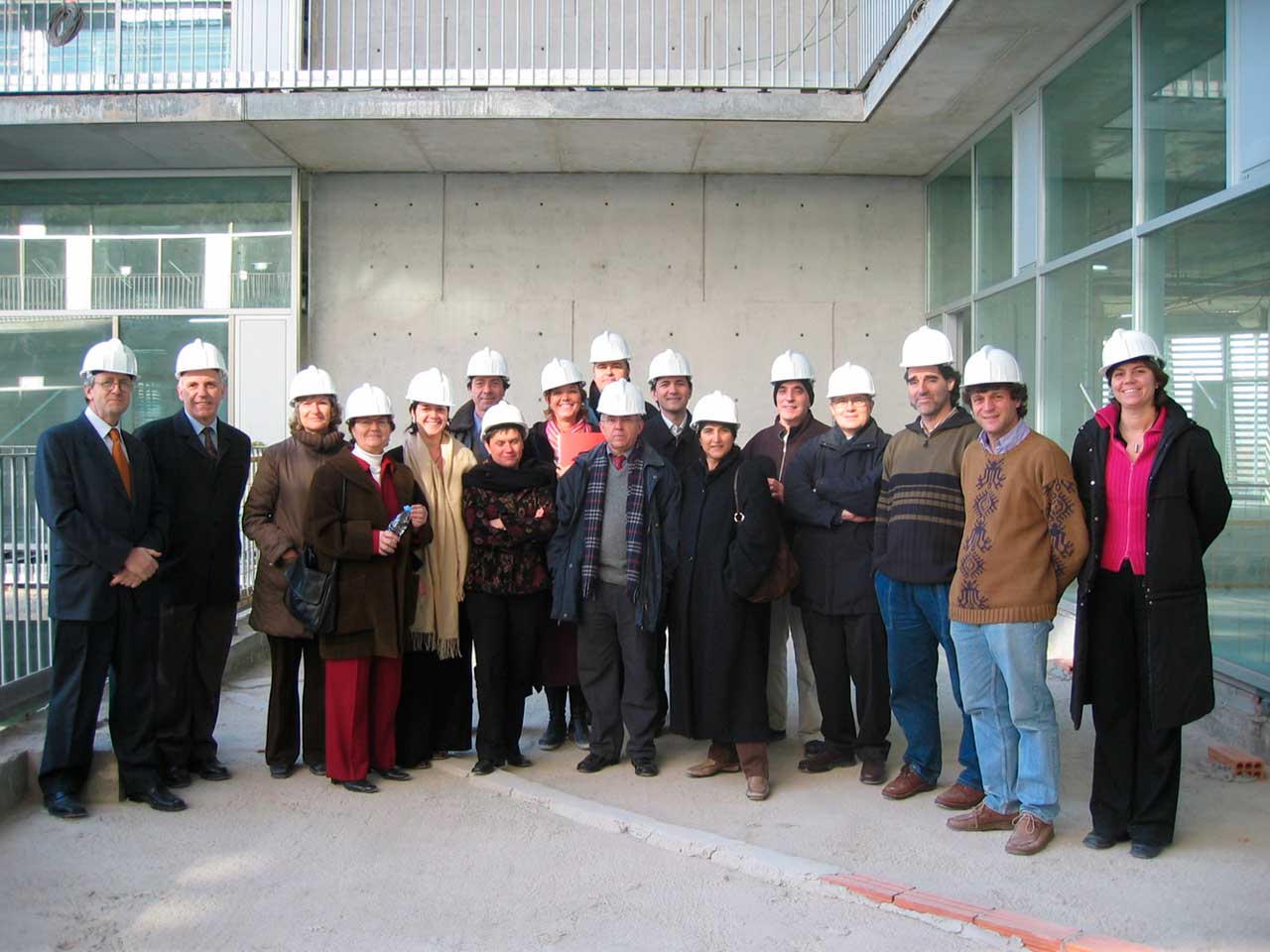
Prior to the move to the PRBB, Fernando Giráldez, a professor of developmental biology and head of the department from 2002 to 2006, had to distribute the spaces the MELIS would occupy at the new premises.
Although he knew the change would ultimately be beneficial, it was not an easy process. ‘They gave me the blueprints for the third and fourth floors of the Park and told me, “Organize these spaces.” I made a lot of drawings of what the new department should look like. But once I’d finished laying everything out, the surveyors informed me that I had to leave about a fifth of the area for utilities, to make room for the pipes. So we had to reorganize it all!’, he reminisced.
Despite such setbacks, and Giráldez’s misgivings about having made some laboratories too small and not having being able to carve out a good break room, there was a general consensus that being at the PRBB was a real asset. ‘There are human and material resources that would otherwise be unattainable for a small faculty at a conventional university. And those resources are compounded by a peer pressure effect that makes you rise to the occasion’, Giráldez said.
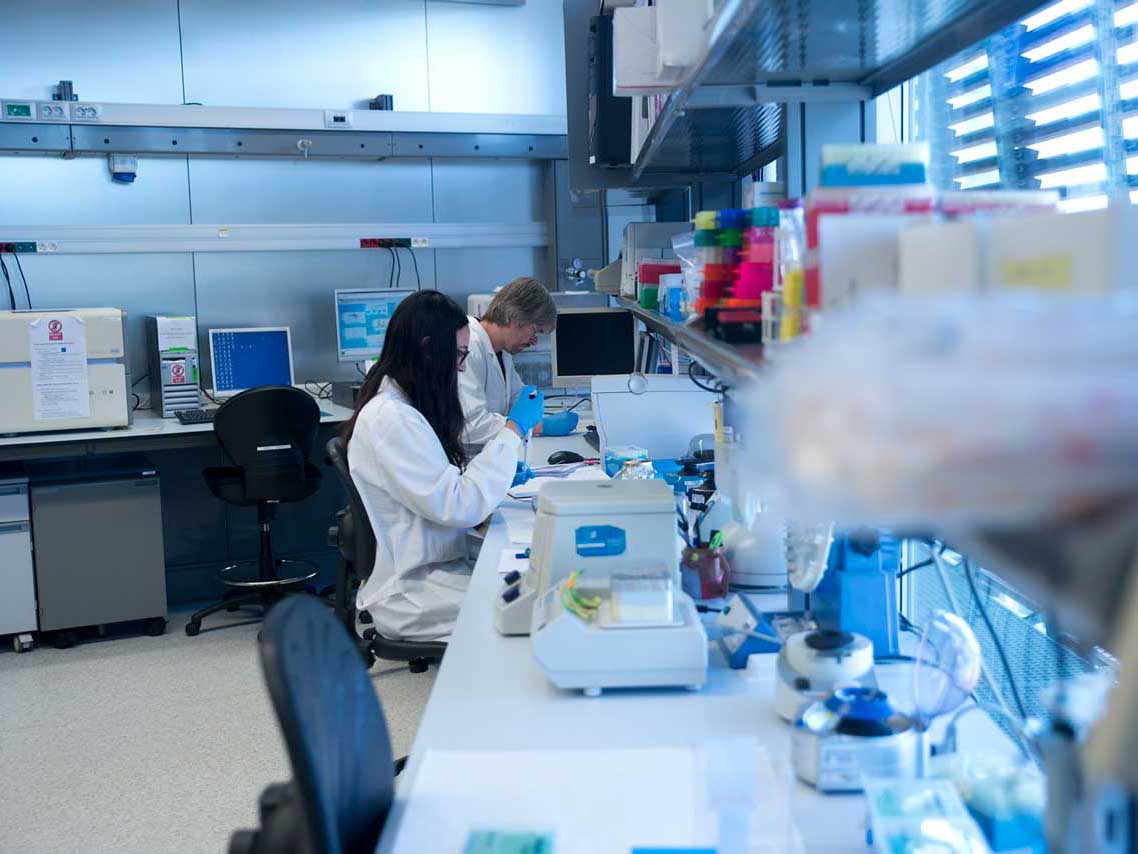
‘There are also no physical separations between institutions at the PRBB. Here, we share spaces, scientific and technical services, and a critical mass of researchers unlikely to be found in a university department’, said David Comas, who led the institution from 2016 to 2022.
The explosion in teaching
The studies offered at the UPF Faculty of Medicine and Life Sciences are inextricably linked to the figure of Jordi Pérez, who came to the university in 1998 to be head of studies and director of the Academic Coordination and Assessment Office. Pérez was tasked with overseeing an innovative and collective educational project and planned actions to promote students’ practical and cross-disciplinary skills. He placed particular emphasis on problem-based learning, the use of new technologies, a teacher-student tutoring action programme lasting the duration of the studies, and a joint assessment programme. Years later, some of these measures were taken up by other departments at the university.
However, the ideas of the man who would go on to be dean of the Faculty from 1999 to 2012 affected not only students. ‘Jordi designed mandatory training courses for teaching staff, attended by all teachers in the department’, recalled Bertranpetit, who, as dean in the 1998-1999 academic year, supported Pérez’s initiatives.
‘Those actions to foster innovation in teaching were groundbreaking’, Pérez explained. Thanks to them, in 2006, the Spanish Ministry of Education and Science awarded the Human Biology programme the third National Award for Research and Teaching Innovation in recognition of its problem-based learning methods. It was not the department’s only teaching award. In 2002, 2005, 2009, 2013 and 2016, the studies offered by the Faculty received the Vicens Vives Prize, awarded by the Catalan government for the highest-quality teaching. Professors Jordi Pérez and Josep Eladi Baños received the same award for their teaching work in 2011 and 2015, respectively.
Years later, the Faculty had to adapt the studies it offered to implement the measures for the creation of the European Higher Education Area (EHEA), colloquially known as the Bologna Plan. ‘Jordi Pérez and his team did a great job adapting the curriculum for the undergraduate degree in Human Biology. I had to design and draw up the curricula for the new master’s degrees’, Giráldez recalled.
‘I had to translate between the languages of the dialects, the Official State Gazette and my colleagues, turning what we had previously called tracks or knowledge pathways into six master’s programmes, which were launched in the 2006-2007 academic year’, the developmental biology professor explained.
The curricular adaptation coincided with the remodelling of the campus facilities. For six years, classes were held in prefabricated modules. ‘The construction work went on for years and years, first, for the PRBB and, then, to renovate the teaching building, which took six years’, Lorente recalled.
‘Keeping up the teaching activity required incredible management. The delay in the final stage of the work for the PRBB coincided with the start of an academic year. For a term, we had to struggle to find places for the teaching in the few spots left that weren’t under construction. We held classes in the auditorium, in the library first thing in the morning, even a few in the dining hall. The students held an assembly to complain. So the dean at the time, Jordi Pérez, and I undertook to keep them up to date. We met with them a few times to go over the blueprints and the progress being made on the construction work’, the director recalled fondly.
Despite the difficulties, in the 2008-2009 academic year, UPF began to offer the interuniversity degree in Medicine, a joint programme with the UAB that hearkened back to its initial desire to train medical professionals.
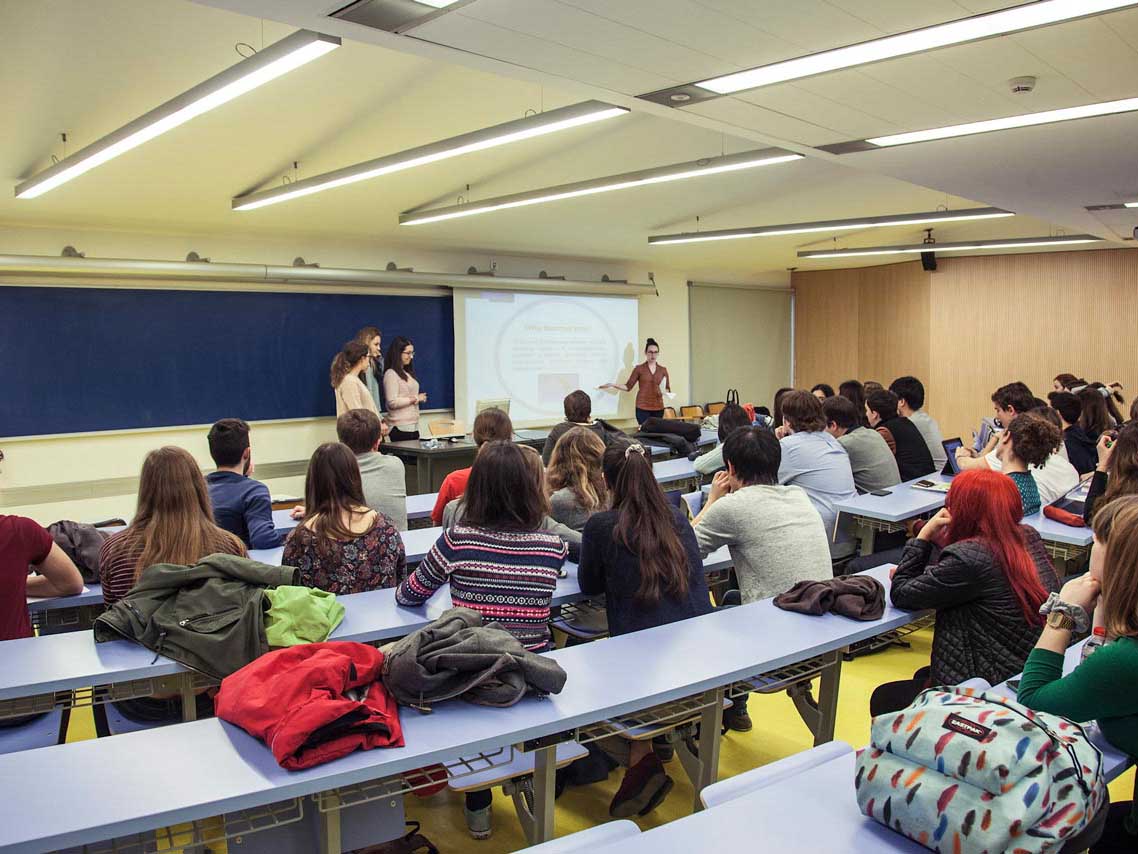
‘Combining the institutional cultures, ways of working and even visions of how medicine should be taught at an institution with a long history such as the UAB and a young university such as UPF, which sought to innovate in teaching, was not easy. But thanks to the understanding between the teaching staff, many of whom also worked together in our care work at Hospital del Mar, we managed to collaborate closely in the same teaching line. In fact, over the years, we ended up creating work teams to draft what is now the curriculum for the degree in Medicine at UPF, which would come years later’, explained Joaquim Gea, who was dean of the Faculty from 2012 to 2023.
One year after the degree in Medicine was launched, the first stage of the construction on campus and incorporation of the Mar Nursing School in the Faculty were completed. ‘On the Mar campus, we were used to constantly negotiating. At first, we had a good neighbour agreement with the IMIM; with the arrival of the UAB and Nursing School, we agreed on rules of procedure’, Lorente explained.
Finally, in the 2011-2012 academic year, the degree programme in Biomedical Engineering was created, which, in the words of Francesc Posas, who headed the department from 2007 to 2013, ‘along with the new degree in Medicine, put the finishing touches on the department’.
Recognition of outstanding research
‘From 2007 to 2013, we tried to transform the department to make it unique within the system’, explained Posas, a full professor of biochemistry and molecular biology. This transformation process had begun with the department’s first retreat some years earlier.
Coupled with efforts to ensure continued excellence in teaching, several actions were undertaken to combine it with cutting-edge research. ‘We reorganized the MELIS into research programmes and created the first external advisory committee to establish a system that would allow us to assess the research we were doing’, said Posas.
Having an external advisory committee – a real rarity at universities – enabled the department to set up a tenure-track recruitment system in line with international standards, a system that would later be adopted by the university itself. This programme led to the recruitment of researchers such as Jordi Garcia-Ojalvo, Andreas Meyerhans and Pura Muñoz. ‘The new hires and the merging of the scientific and technical services with those of the CRG posed challenges, but they helped make the department stronger in the long run’, the biochemist explained.
In 2014, the fifteen-year pursuit of excellence paid off. The MELIS, along with five other university departments in Spain, was recognized in the first call for proposals to be accredited as a María de Maeztu Unit of Excellence, a distinction awarded to top research centres and units that stand out for their importance and the international impact of their research results.
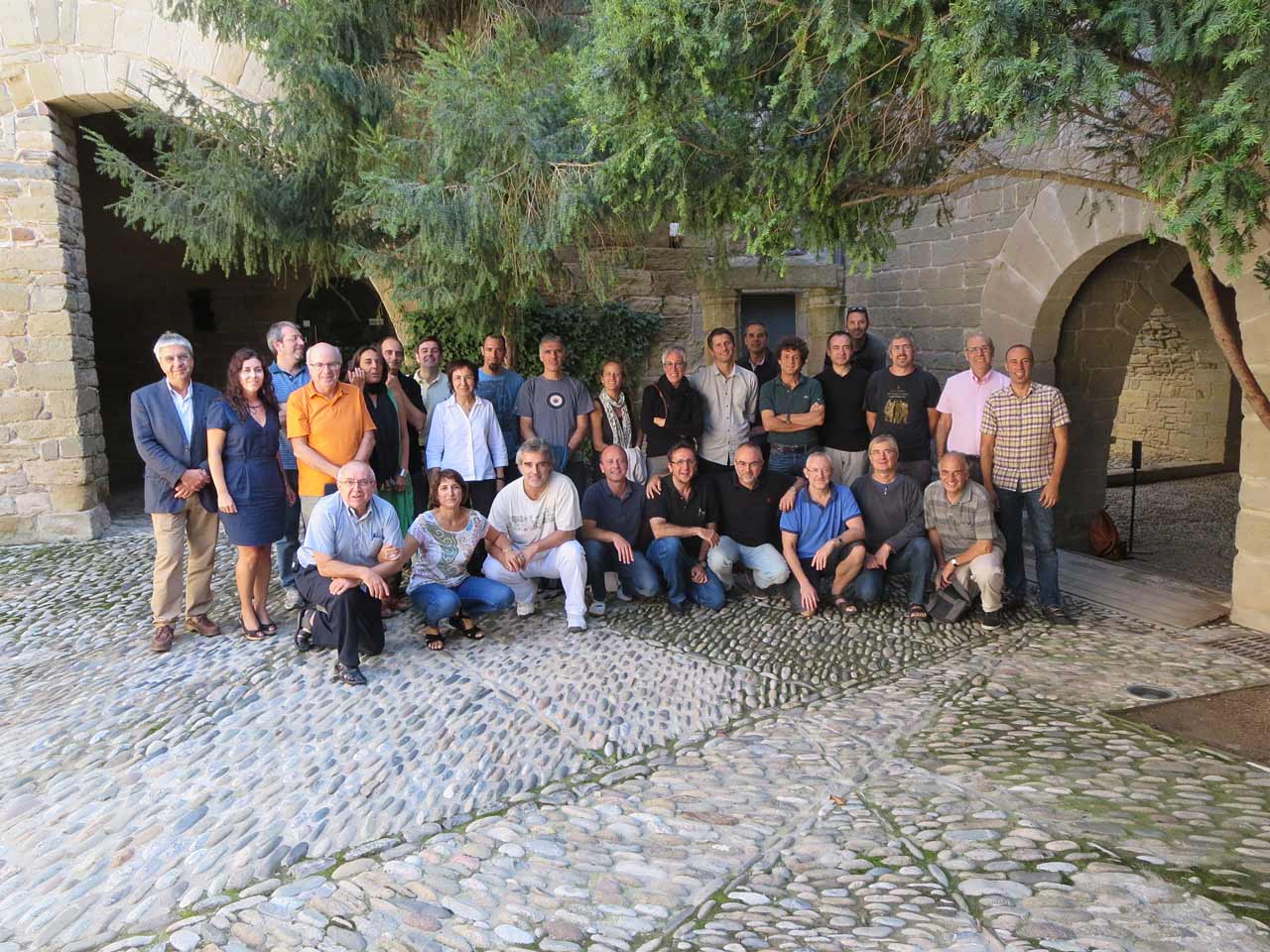
‘We managed to reflect the value of being heterogeneous. We recognized how unusual it was to have virologists, physiologists, evolutionary genomics specialists, people doing clinical medicine, basic research, etc., all in the same department, even in the same project! And we summed up all that diversity in a department-wide transformation plan’, explained Navarro.
‘This plan gave rise to the joint programme meetings, monthly meetings with the entire teaching and research staff. The campus leadership and dean also started attending management meetings with a view to aligning teaching as much as possible with recruitment, research, and the campus, and we encouraged the service units to have their own research projects in order to blaze new trails in their fields’, said Navarro.
Four years later, under Comas’s leadership, the department was accredited as a María de Maeztu unit for the second time. ‘We were the first university department to be awarded another grant’, said Comas. A feat that, according to Navarro, was nothing short of heroic.
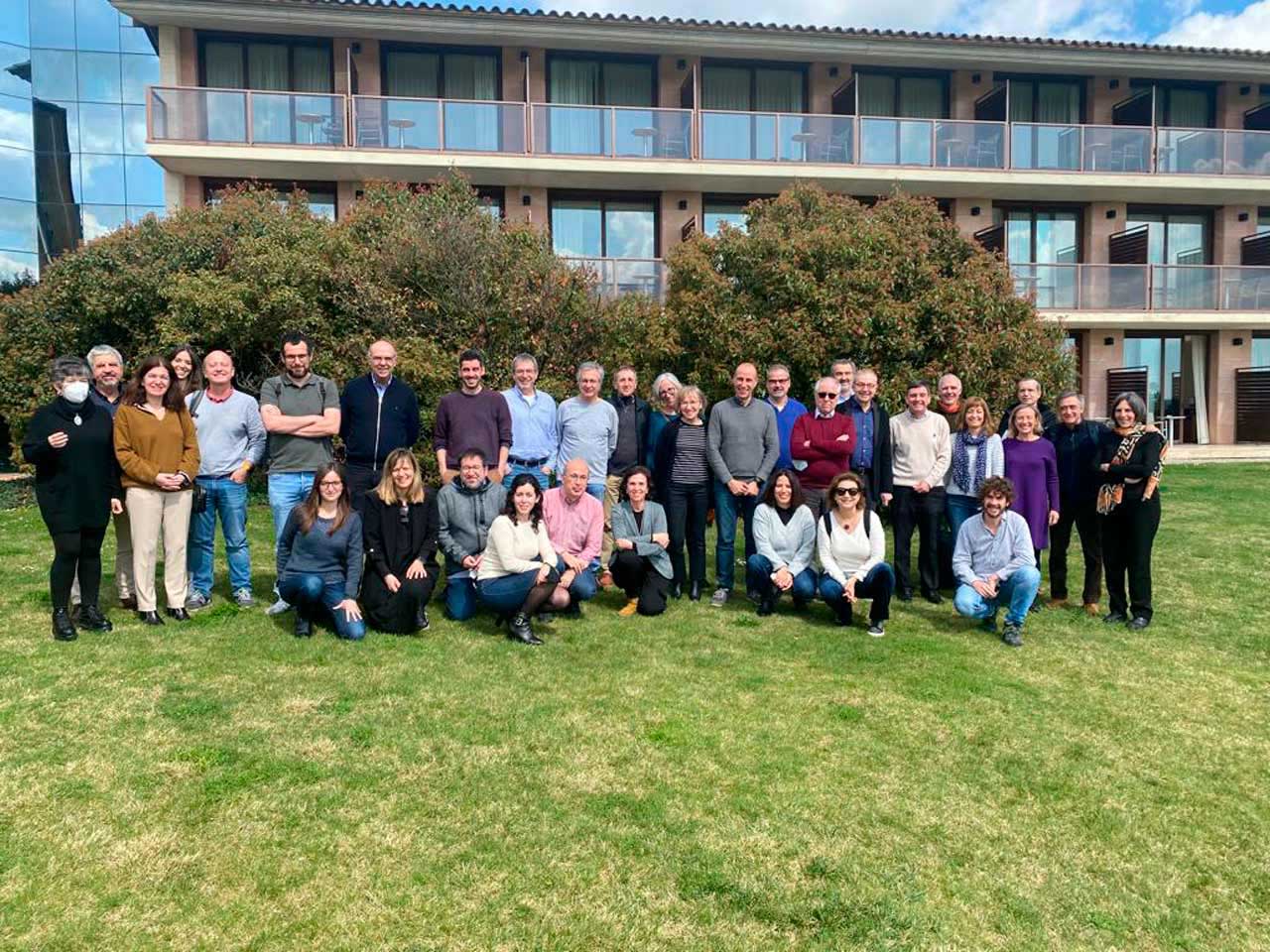
‘Thanks to the María de Maeztu grant and the formalization of the tenure-track programme, we were able to attract and retain talent in a very clear and transparent way’, Comas added. ‘Establishing the programme, once the university had integrated it – and making everyone aware that it was the only way to join the MELIS – was both a major milestone and a declaration of intent.’
The pandemic
The lockdown declared in March 2020 due to the Covid-19 pandemic changed our lives. ‘The day before the state of emergency was declared, we had inaugurated the club room, a place to socialize and encourage interaction between department members’, said Comas. The anecdote illustrates how few people expected what was to come.
This constantly evolving context of uncertainty complicated the department’s management. ‘Keeping teaching going was a real challenge. From one day to the next, we had to make classes remote. Later, we switched to a virtual format. But, like the rest of the universities, we managed to come through it’, he explained.
Keeping up the pace of research was harder. ‘Our research is largely based on experiments. For many people, being able to come in to the PRBB facilities to work was essential’, Comas added. ‘Additionally, the Catalan government asked universities to prepare to participate in a hypothetical second phase of the Orfeu Programme – for the mass genotyping of patient samples to detect the presence of the virus. Although ultimately that never happened, the request involved a major logistical effort. We had to deploy the necessary equipment and staff to carry it out.’
Consolidating the initial mandate
In September 2021, 23 years after its founding, the university managed to fulfil its initial mandate, offering the first year of its own degree programme in Medicine. ‘The UAB and UPF had different ways of doing things, different cultures and teaching perspectives, and there were discrepancies. So, we revisited the idea of offering our own studies in Medicine’, Comas explained.
‘Creating our own degree in Medicine was a tall order, as it meant getting a lot of different parties to agree. But despite some reticence, we ultimately managed to make everyone see the benefits of this change. Of course, it was a team effort, from the rector and vice-rector for Teaching Staff at the time, Jaume Casals and Pablo Pareja, respectively, to the rector’s delegates for the Medicine programme,
Jaume Bertranpetit and, later, Francisco Giráldez, Deans Quim Gea and Joan Ramon Masclans, and teaching staff such as Cristina Pujades or Josep Maria Antó.’
‘Really, it was something a lot of department members wanted to do, as part of the original mandate, a commitment we’d had ever since the MELIS was created’, Comas added.
In addition to the institutional challenges, this period saw more construction work on the teaching building to build simulation rooms and a dissection room – key infrastructure for the new studies – and the incorporation of specialized clinical teaching staff from Hospital del Mar. ‘Since launching our own degree programme in Medicine, we have hired around 150 adjunct lecturers and around fifteen permanent teaching staff members’, said Jordi Garcia-Ojalvo, a professor of applied physics and head of the department since June 2022.
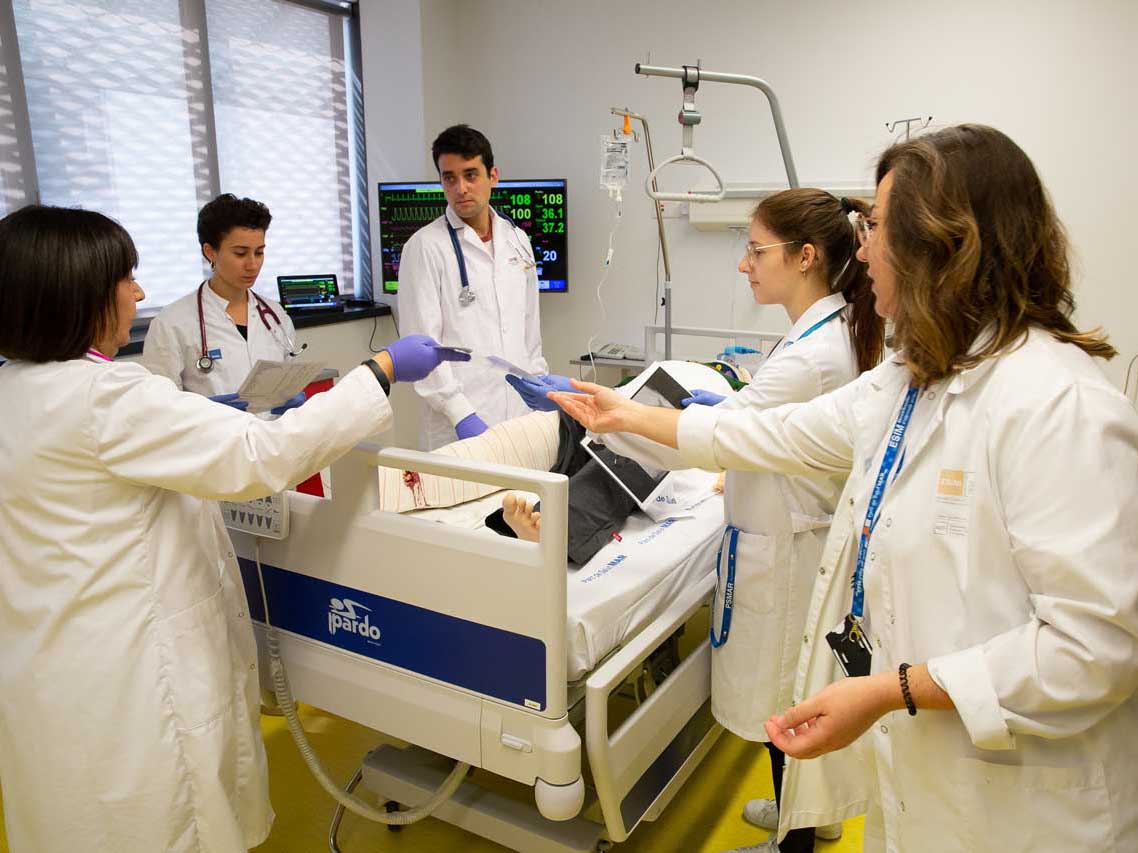
‘The hiring of all these colleagues entails a change of philosophy, a major challenge for a unique department such as ours. Going forwards, we will have to team up with clinical professionals whose academic activity differs from ours in order to remain a national and international benchmark for outstanding research. As well as to succeed’, Garcia-Ojalvo explained enthusiastically.
‘The entire teaching team will have to get to know each other in order to better train future medical professionals. We want UPF to produce doctors with a humanistic side, keen researchers with strong technological skills who are open to the generational change we are already seeing in our students and patients’, said Joan Ramon Masclans, dean of the Faculty since last March. ‘And we have to do that leveraging UPF’s uniqueness and the experience of Hospital del Mar, which has been training medical professionals for 50 years.’
Carrying the torch
Clearly, a lot can be accomplished in a quarter of a century. The once small, courageous and ambitious department has grown and today has a team of nearly 600 research, teaching and administrative professionals, who work every day to make sure that the MELIS never stops.
In this time, the department has published thousands of scientific papers, passed on its knowledge to more than 900 students, who have gone on to earn degrees in Human Biology, and supported more than 1,200 doctoral students, who have taken their first steps in the world of research.
This story has mentioned only some of the people who have worked to make the MELIS grow. But in the words of Posas, ‘Managing a department is always a team job.’ It is a collective success of a joint effort by teaching and research staff and technical, management, administrative and service staff working side by side. A pooling of efforts to ‘continue the tradition of those who have come before us, creating a department that, even today, is unique in the field of biomedicine at Spanish universities’, Navarro concluded.
